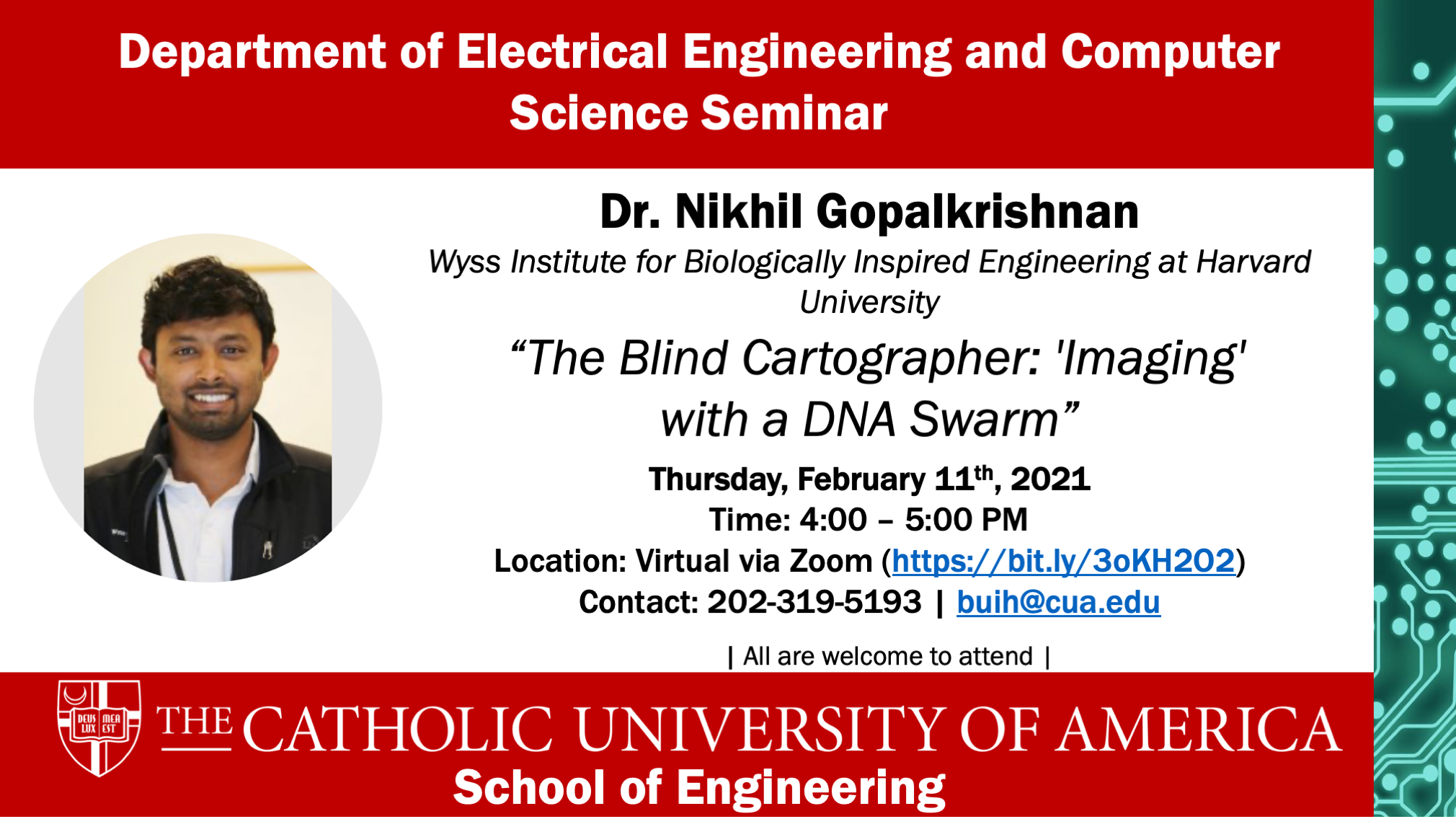Dr. Nikhil Gopalkrishnan, Harvard University

Abstract: Techniques that can both spatially map out molecular features and discriminate many targets would be highly valued for their utility in studying fundamental nanoscale processes. Despite decades of development, no current technique can achieve both nanoscale resolution and discriminate hundreds of targets. Here, we report the development of a novel bottom-up technology that: (a) labels a sample with DNA barcodes, (b) measures pairwise-distances between labeled sites and writes them into DNA molecules, (c) reads the pairwise-distances by sequencing and (d) robustly integrates this noisy information to reveal the geometry of the underlying sample. We demonstrate our technology on DNA origami, which are complex synthetic nanostructures. We both spatially localized and uniquely identified over a hundred densely packed elements, some spaced just 6 nm apart, with an average spatial localization accuracy (RMS deviation) of ~2 nm. The bottom-up, sequencing-enabled mechanism of this 'DNA nanoscope' is fundamentally different from top-down imaging, and hence offers unique advantages in precision, throughput and accessibility.
Recorded Seminar: The Blind Cartographer: 'Imaging' with a DNA Swarm
